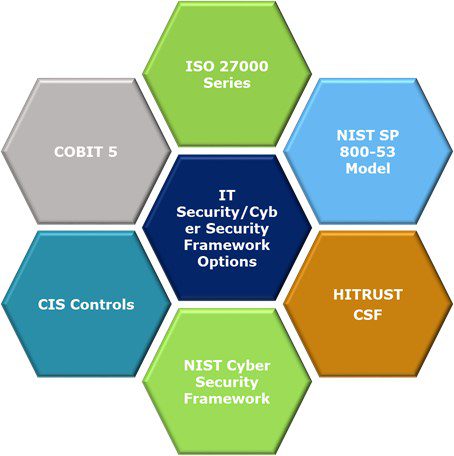Blogs
Home / Blog


A comparison of 2021 with 2020 reveals a massive 50% increase in the number of cyberattacks. For the cherry on top, most of these attacks targeted corporate networks, increasing the total cost of managing a cybersecurity attack by 10, as is evident by the cost of data breach report 2021.
With hybrid work becoming the new norm, it will lead to a paradigm shift in the cybersecurity landscape. IT teams are struggling to gain visibility into remote workers devices the same way they would in a traditional office setup. This can create even more security vulnerabilities, which hackers will exploit. As a result, we can expect the cybersecurity attacks to continue rising even in 2022.
Phishing attacks also reached an all-time high in the Q3 of 2021 and badly disrupted corporate systems. With the increasing popularity of remote accessibility, the jump in ransomware numbers shouldn’t come as a surprise. Supply chain attacks such as the colonial pipeline and Solarwinds attacks have sent shockwaves throughout the cybersecurity industry and we can see more of them in 2022.
So, how can you protect your business from a barrage of cybersecurity attacks? The answer lies in improving the cyber-resilience of your organization. If you are interested in learning about what targets you need to set and achieve in order to boost the cybersecurity resilience of your organization, you have come to the right place.
In this article, you will learn about six cyber resilience targets you should not only set but also achieve this year.
One of the biggest mistakes businesses make is that they only focus on acquiring the latest and greatest cybersecurity tools, while neglecting their employees. No matter how good your cybersecurity defenses are, if your employees are not cyber-aware, even the best tools can not save you. You need to invest in increasing employee awareness by arranging cybersecurity trainings for them.
The more cyber aware your employees are, the less likely they are to fall victim to social engineering attacks. Additionally, cyber aware employees can also spot potential suspicious and malicious activity and raise the red flag before it is too late.

Employee awareness is even more important in a remote work environment where your employees are out of the heavily guarded four walls of the office. This means that they can become a soft target for attackers especially when they are accessing sensitive company data remotely.
Once you have built cybersecurity awareness amongst your employees, the next step would be to strengthen your network defenses. This won’t be possible without critically analyzing your current network infrastructure. Identify weaknesses and loopholes in your organization’s network defenses and take measures to plug in the gaps before cybercriminals can capitalize on them.
Using a virtual private network for managing remote connections is one way to minimize the risk. Secondly, you can think about segmenting your network; use one network for day-to-day operations and another for performing sensitive transactions and accessing critical business information. You can also consider adopting a zero trust architecture for added security and privacy.
Yes, you read that right. If your security system is not as effective now as it once was, it is high time to ditch it for a better alternative. A security system with too many security flaws can work against you instead of working in your favor. Log4j attacks are the best example of this. The best way to overcome these issues is to be proactive.
Instead of waiting for cyberattackers to penetrate your system, hire an ethical hacker to do it. This will give you a clear picture about how good your cybersecurity defenses actually are. Moreover, you can also get an idea about areas where improvements are needed.
If the first thing that comes to your mind when you hear the word cybersecurity resilience are cybersecurity tools and frameworks, you are not alone. Most organizations think about cybersecurity resilience the same way. What they don’t realize is that not every cybersecurity framework or tool is created equal. If you choose the wrong cybersecurity framework or tool, it will cost you much more in the long run.

This is why it is important to first assess your needs to determine which cybersecurity framework fits your needs perfectly. For example, if you opt for a static firewall instead of a dynamic or next-generation firewall, attackers can easily bypass the basic level of protection that a static firewall offers and you will become an inadvertent victim of a cybersecurity attack even while having a firewall. Meanwhile a sophisticated firewall can protect you from a wide range of attacks, which drastically minimizes the risk of data breaches and cybersecurity attacks harming your business.
With cybersecurity attackers staying one step ahead of businesses, it is time that businesses develop a new cybersecurity resilience narrative that can ward off the latest cybersecurity threats.
Your goal is to eliminate threats before they can move laterally through your networks and wreak havoc on your organization. Take advantage of automation to automate threat monitoring and detection, and gain actionable insights into attacker efforts. Have an incident response plan ready so you know exactly how to react if your organization comes under a cybersecurity attack.
When it comes to cybersecurity and cyber resilience, you should always be ready to challenge the status quo and break the rules in cybersecurity. Explore new avenues, tools and technologies, such as automated endpoint solutions and sophisticated threat hunting tools.
How do you improve the cyber resilience of your organization? Share it with us in the comments section below.
Enter your email to receive the latest news, updates and offers from HostNoc.
